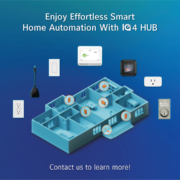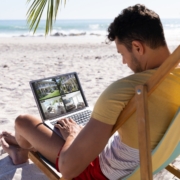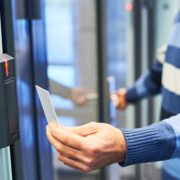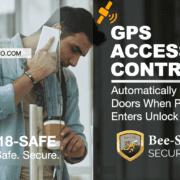What Do Alarm Systems With Power G Mean?
/in Blog, Free Estimate/by Bee-Safe SecurityWhat Do Alarm Systems With Power G Mean?
Alarm systems are crucial for protecting homes and businesses. One term you might encounter is “Power G.” But what does it mean, and how does it benefit you? Let’s dive into the details.
1. Advanced Wireless Technology Power G technology represents the latest in wireless communication for alarm systems. It offers long-range coverage, making it suitable for large properties.
2. Interference-Free Communication Power G operates on multiple frequencies, ensuring reliable communication. This reduces the risk of interference from other wireless devices, providing a stable connection.
3. Enhanced Security Features Alarm systems with Power G come with advanced features like encryption and two-way communication. These features prevent tampering and ensure signals are transmitted securely.
4. Battery Life Devices using Power G technology have extended battery life. This means less frequent replacements and more reliable performance over time.
5. Easy Installation and Expansion Power G systems are easy to install and expand. Adding new sensors or devices is straightforward, making it a flexible solution for growing security needs.
6. Free Security Estimate Interested in upgrading to an alarm system with Power G technology? Bee-Safe offers a Free Security Estimate to evaluate your security requirements. Contact us today to learn more.
Understanding Power G technology can help you make informed decisions about your security system. Its advanced features and reliable performance make it an excellent choice for comprehensive protection.
How Cloud Access Control Can Benefit Your Business
/in Blog, Free Estimate/by Bee-Safe SecurityHow Cloud Access Control Can Benefit Your Business
Businesses today need advanced security measures to protect their assets and data. Cloud access control is an innovative solution that offers numerous benefits. Let’s explore how it can enhance your business security.
1. Remote Management With cloud access control, you can manage your security system from anywhere. Whether you’re on-site or off, you can control access, monitor activity, and receive alerts via your smartphone or computer.
2. Scalability Cloud access control systems are easily scalable. As your business grows, you can add more doors, users, and locations without significant hardware investments.
3. Cost-Effective Traditional access control systems require substantial upfront costs and maintenance. Cloud solutions reduce these expenses by eliminating the need for on-site servers and extensive hardware.
4. Enhanced Security Cloud access control provides real-time monitoring and instant updates. You can set custom access levels, ensuring only authorized personnel enter restricted areas. Additionally, cloud systems often integrate with other security measures like video surveillance.
5. Data Analytics Access control data can be analyzed to improve security protocols. Understanding patterns and identifying potential threats allows for proactive measures.
6. Free Security Estimate Considering cloud access control for your business? Bee-Safe offers a Free Security Estimate to help you determine the best solution for your needs. Contact us to get started.
Implementing cloud access control can streamline your operations and enhance your business security. Embrace this modern technology to safeguard your assets effectively.
Home Security (Vacation Mode) Best Practices
/in Blog, Free Estimate, Uncategorized/by Bee-Safe SecurityHome security is essential for protecting your family and possessions. Implementing simple, everyday practices can significantly enhance your home’s safety. When you’re on vacation, the last thing you want to worry about is the security of your home. Implementing a few key practices can help ensure your property remains safe while you’re away. Here are the best practices for putting your home in “Vacation Mode.”
1. Use Timers for Lights Set timers for indoor and outdoor lights to create the illusion that someone is home. Choose random patterns to mimic normal activity and deter potential intruders.
2. Secure All Entry Points Double-check that all doors and windows are securely locked. Use deadbolts and consider installing additional security bars or dowels in sliding doors and windows.
3. Hold Mail and Deliveries A full mailbox or packages left on the doorstep are clear signs that no one is home. Put a hold on your mail and ask a neighbor to collect any deliveries while you’re away.
4. Inform a Trusted Neighbor Let a trusted neighbor know you’ll be away and ask them to keep an eye on your property. Provide them with a key and your contact information in case of emergencies.
5. Adjust Your Security System Ensure your security system is armed and functioning properly. Update contact information and settings, and consider enabling any vacation-specific features your system offers.
6. Avoid Social Media Announcements While it’s tempting to share your vacation plans on social media, it’s best to wait until you return to post about your trip. Public announcements can inadvertently alert potential burglars.
7. Use Security Cameras Install security cameras around your property and ensure they’re working correctly. Many modern cameras offer remote monitoring, so you can check on your home from anywhere.
Everyday Best Practices
1. Lock Doors and Windows
Always lock your doors and windows, even when you’re at home. Invest in quality locks and consider installing deadbolts for added security.
2. Use Security Cameras
Security cameras act as a deterrent to potential intruders. Place cameras at entry points and ensure they’re visible. Modern cameras can be monitored via smartphone, providing real-time alerts.
3. Install Outdoor Lighting
Illuminate your home’s exterior with motion-sensor lights. This reduces hiding spots for intruders and increases visibility at night.
4. Maintain Your Yard
Keep bushes and trees trimmed to eliminate hiding spots. A well-maintained yard also signals that someone is home.
5. Secure Your Wi-Fi Network
Protect your home network with a strong password and encryption. This prevents hackers from accessing your personal information.
6. Get a Free Security Estimate
Consider professional security services for comprehensive protection. Bee-Safe offers a Free Security Estimate to assess your home’s security needs. Contact us today to learn more.
By incorporating these practices into your daily routine, you can create a safer environment for your family. Stay vigilant and proactive to ensure your home remains secure.
Real-Time 911 Camera Sharing Solution | Bee-Safe Technologies
/in Blog, Technology/by Bee-Safe SecuritySeconds matter in a crisis. Firefighters, police officers, and emergency medical responders need to make decisions fast with the information they have on hand – and that information leans heavily on direction from 911 professionals.

Typically, 911 professionals learn about an ongoing emergency situation from phone calls placed by those affected by the situation or by nearby witnesses. Often the same incident can spark dozens of calls, though each caller may have little information to add. What callers usually don’t have is a way to directly and visually communicate the state of what’s happening.
Even if an emergency call center has the ability to receive photos or video clips, callers can’t provide ongoing video of the area. Operators therefore lack real-time situational awareness.

Filling the communications gap
Because that awareness is lacking, on-the-ground personnel operate at a disadvantage. Is there anyone around the next corner? Is there a hazard that an outside observer would be able to warn them about? From a downed electrical wire to an armed intruder, they need knowledge in advance to help keep others safe.
With direct, real-time access to cameras that cover the actual area of the scene, emergency response operators or dispatchers can tell first responders where people are located, and whether smoke or other safety hazards are present. They can also
supply real-time updates about changes they see on-screen. Until recently, a system that could allow this kind of information sharing would require dedicated network connections, with all of their costs and implications for privacy and security. But secure video sharing with emergency response centers is now possible even for very small organizations, which can elect to have a number of cameras ready to share only in the event of an emergency.

Real world options, ready to deploy
Bee-Safe Technologies offers a ready-made solution that can turn any compatible video surveillance camera into an ongoing source of information for emergency call centers when an incident occurs. Eagle Eye 911 Camera Sharing is available to current Eagle Eye customers, and as an affordable turnkey solution for non-Eagle Eye customers.
Unlike systems proposed in some jurisdictions that require integration with police cameras, Eagle Eye Networks 911 Camera Sharing is designed to supply video to local emergency communications centers only when a crisis is reported – and only as long as the emergency lasts. When an emergency call is placed from anywhere within a customizable distance of a pre-designated camera, the camera’s video feed is made
automatically and securely available to the emergency operator. Imagine the peace of mind that could come from closing this communications gap on your own premises.
Eagle Eye 911 Camera Sharing is available at a low monthly cost to Eagle Eye VMS customers (and is included at no additional charge with Eagle Eye Professional and Enterprise Editions), or as a subscription-based standalone system supporting up to four cameras. Learn more about making your premises safer with camera sharing.
Are you ready for an on-site emergency? A practical checklist Camera sharing is one valuable part of building resilience into your organization – survey your organization’s overall readiness with the help of a practical checklist.
Exploring Different Types of Access Control Credentials
/in Access Control, Blog/by Bee-Safe SecurityAccess control systems play a crucial role in securing physical spaces and digital resources. They ensure that only authorized individuals are granted entry or usage rights. One of the key components of an access control system is the type of credential used to verify an individual’s identity. Let’s take a closer look at some common types of access control credentials:
1. Keyfob RFID
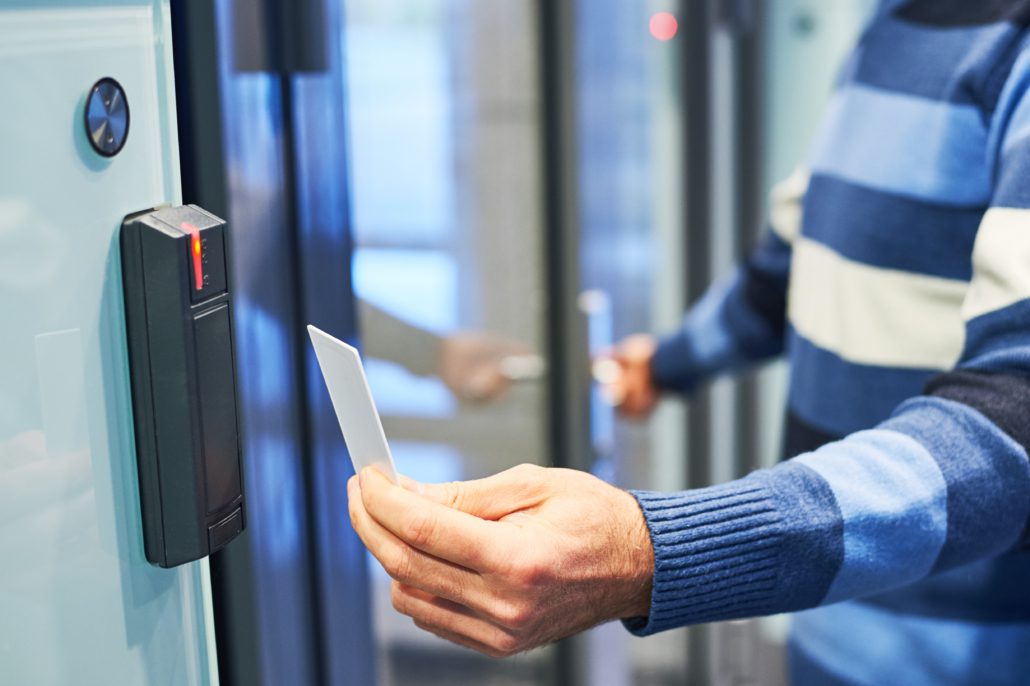
Keyfob RFID (Radio-Frequency Identification) credentials are small devices that emit a radio signal containing unique identification information. These credentials are commonly used for proximity-based access control systems. When a keyfob is brought close to a reader, the reader detects the signal and grants access to the individual if their credentials are valid. Keyfob RFID is convenient and efficient for granting quick access to authorized personnel.
2. PIN Code

PIN (Personal Identification Number) codes are numeric passwords that individuals enter using a keypad or touchscreen. This type of credential is easy to use and can be changed frequently for enhanced security. While PIN codes provide a level of security, they are susceptible to unauthorized access if the code is compromised or shared.
3. Fingerprint Biometric

Fingerprint biometric credentials utilize an individual’s unique fingerprint patterns to grant access. Biometric systems scan and analyze the minutiae points of the fingerprint, ensuring a high level of accuracy and security. Fingerprint recognition is convenient and eliminates the need to remember passwords or carry physical cards.
4. Facial Recognition
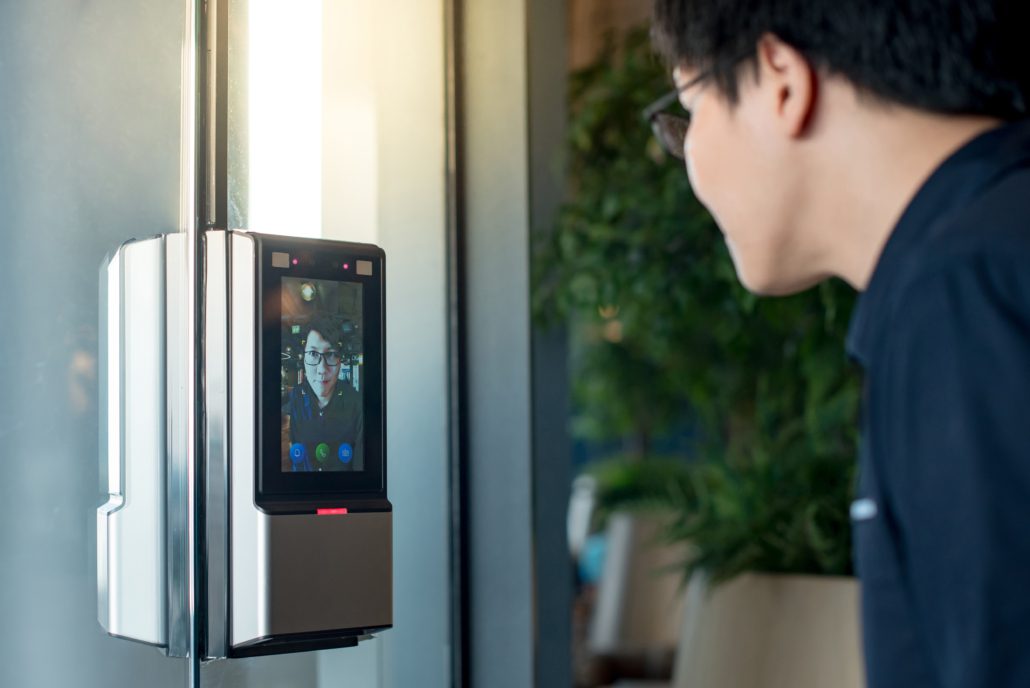
Facial recognition is a biometric technology that identifies individuals based on their facial features. This credential type captures and analyzes facial characteristics to verify identity. Facial recognition systems have advanced significantly and can work effectively even in various lighting conditions. However, concerns about privacy and accuracy have been raised in relation to this technology.
5. Phone Bluetooth

Using Bluetooth technology, individuals can use their smartphones as access control credentials. When the phone is within range of a designated access point, it automatically connects and grants access to the user. This approach is convenient since many people carry their phones with them at all times. However, it requires individuals to keep their Bluetooth enabled and secure against potential hacking.
6. GPS Passive Mobile Credentials
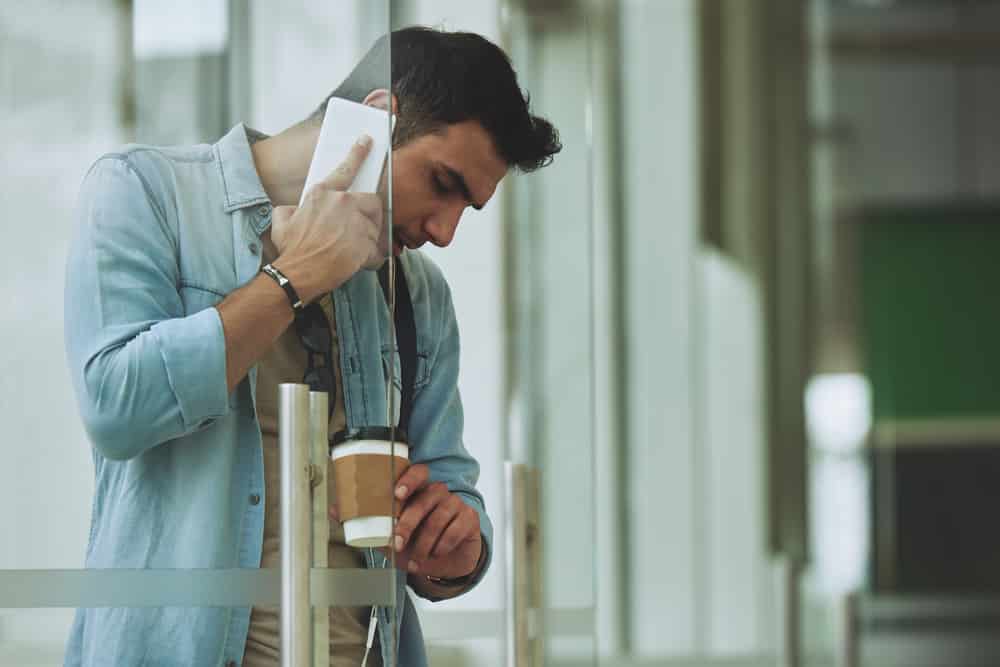
GPS passive mobile credentials rely on location data from a user’s smartphone to grant access. When the smartphone is in a predefined geographical area, the access control system recognizes the user’s location and allows entry. This method is useful for controlling access to specific outdoor areas or locations with varying access permissions.
Access control systems can use a single type of credential or a combination of several to ensure multi-factor authentication. The choice of credential depends on the level of security required, user convenience, and the specific use case. It’s important for organizations to evaluate the pros and cons of each credential type to determine the most suitable approach for their access control needs.
Modern Access Control: Bee Safe Security GPS Mobile Credentials
/in Access Control, Blog/by Bee-Safe Security
In today’s fast-paced and technology-driven world, traditional methods of access control are evolving to meet the demands of modern security challenges. Bee Safe Security, a pioneering company in the field of access control systems, is now offering – GPS Mobile Credentials. This cutting-edge technology leverages the power of GPS (Global Positioning System) to provide secure and convenient access control solutions. In this article, we delve into the features and benefits of Bee Safe Security GPS Mobile Credentials and explore how they are revolutionizing access control systems.
The Evolution of Access Control
Access control systems have come a long way from conventional locks and keys to smart cards and biometric readers. However, each advancement has been accompanied by its own set of limitations and challenges. Smart cards can be lost or stolen, and biometric systems are not immune to false acceptance or rejection. This is where GPS Mobile Credentials step in to redefine the landscape of access control.
Understanding Bee Safe Security GPS Mobile Credentials
GPS Mobile Credentials take advantage of the widespread use of smartphones equipped with GPS capabilities. Bee Safe Security has harnessed this technology to create a secure and versatile access control solution. Users can download a dedicated mobile app onto their smartphones, transforming their devices into powerful access control credentials.
Key Features and Benefits
- Enhanced Security: GPS Mobile Credentials provide an additional layer of security. By utilizing GPS technology, the system can verify the user’s location, ensuring that access is granted only when the user is physically present at the designated area.
- Elimination of Cards and Keys: Say goodbye to the hassle of managing access cards or keys. With Bee Safe Security GPS Mobile Credentials, users can access authorized areas using their smartphones, streamlining the process and reducing the risk of lost or stolen credentials.
- Real-time Monitoring: Facility managers and security personnel can monitor access in real time. The GPS-based system provides accurate data on when and where individuals enter or exit specific locations, enhancing situational awareness.
- Customizable Access Levels: GPS Mobile Credentials allow administrators to set customized access levels for different users. This level of flexibility ensures that individuals only gain entry to areas that are relevant to their roles or responsibilities.
- User-Friendly Experience: The user-friendly mobile app offers a seamless experience, allowing users to present their smartphones for access control with ease. No more fumbling for cards or remembering PINs.
- Cost-Effective Solution: GPS Mobile Credentials can be a cost-effective alternative to traditional access control methods. The need for physical cards, printing, and distribution is eliminated, reducing operational expenses.
- Scalability and Integration: Bee Safe Security GPS Mobile Credentials can be seamlessly integrated with existing access control systems. This scalability makes it an ideal choice for small businesses and large enterprises alike.
- Environmental Impact: By reducing the need for physical access cards and their associated waste, GPS Mobile Credentials contribute to a more environmentally friendly access control solution.
Conclusion
Bee Safe Security’s GPS Mobile Credentials represent a groundbreaking advancement in the field of access control systems. By harnessing the power of GPS technology, these credentials offer enhanced security, convenience, and flexibility. As organizations seek to embrace the future of security, Bee Safe Security’s innovative solution is poised to reshape the way we control access to our environments. With GPS Mobile Credentials, the future of access control is at our fingertips.

